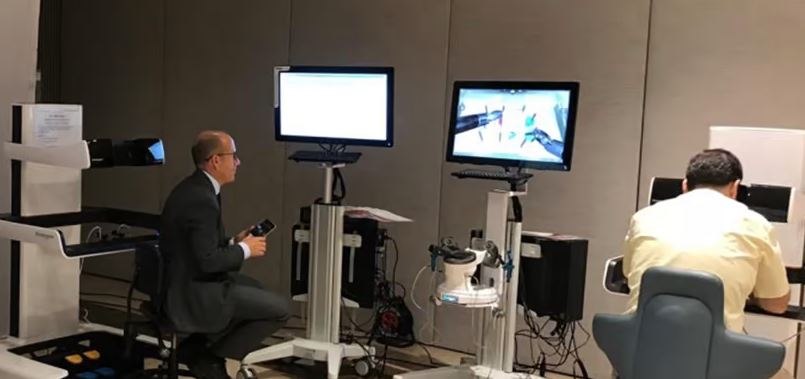Customer Company Size
Mid-size Company
Region
- America
Country
- United States
Product
- Nutanix Virtual Computing Platform
- VMware ESXi
- Horizon View
- Nutanix NX-3350
Tech Stack
- Virtualization
- VDI (Virtual Desktop Infrastructure)
- Hyperconverged Infrastructure
Implementation Scale
- Pilot projects
Impact Metrics
- Cost Savings
- Customer Satisfaction
- Productivity Improvements
Technology Category
- Infrastructure as a Service (IaaS) - Cloud Computing
- Infrastructure as a Service (IaaS) - Cloud Storage Services
Applicable Industries
- Education
Applicable Functions
- Business Operation
Use Cases
- Remote Asset Management
- Virtual Training
Services
- System Integration
About The Customer
Cleveland State Community College is an accredited public community college serving about 3,500 regular and 1,500 non-credit students. The college’s 105-acre campus is located in Southeastern Tennessee, 30 miles northeast of Chattanooga. The IT department supports about 1,300 desktop computers and mobile devices on campus. Committed to quality education, Cleveland State operates within the governance of the Tennessee Board of Regents. In addition to the offerings on the main campus, Cleveland State has offices and classrooms in Athens and Madisonville and offers classes throughout its service area of Bradley, Meigs, McMinn, Monroe, and Polk counties.
The Challenge
When Chris Mowery joined Cleveland State Community College as Director of Information Technology, he and his team inherited a VDI pilot project that was not working out. It was a 25-client system running on a rack server and iSCSI SAN. The performance was poor, even slower than physical desktops. The platform was also difficult to manage, even for a small configuration, and scaling it out was not going to be financially possible. However, the benefits of VDI, especially simplified desktop administration, still appealed to them. They decided to look at other options and discovered the Nutanix Virtual Computing Platform hosting VMware ESXi and Horizon View was exactly what they needed. The college’s mathematics lab exemplified the desktop challenges they faced. The lab is high-use and stays full most of the day. The hardware was a mix of 90 old and new computers. Management was time-consuming, and the lab itself was too hot due to high thermal output.
The Solution
The Nutanix-based VDI solution cost $170,000 or 40% less than the competitive alternatives. In fact, the total capital cost of VDI hardware and software was slightly less per client than physical desktops. In three years they will also be able to skip a desktop refresh cycle which would result in tremendous savings overall. From the perspective of the IT team, the biggest draw was Nutanix’s management simplicity. It saved several consultant hours for initial configuration and streamlined ongoing management. Cleveland State purchased a 3-node Nutanix NX-3350 for phase one of their VDI implementation. Setup was straightforward and took only a few hours. The Nutanix appliance fits in 2U of rack space, yet supports 200 virtual desktops. The competitive solutions would have required 6U to support that number of desktops. The virtual desktops run on PCs as well as thin clients. The applications used include math modeling, office productivity software, and video streaming for coursework. The performance and user experience of virtual desktops is actually far better than the physical desktops they replaced.
Operational Impact
Quantitative Benefit

Case Study missing?
Start adding your own!
Register with your work email and create a new case study profile for your business.
Related Case Studies.

Case Study
Revolutionizing Medical Training in India: GSL Smart Lab and the LAP Mentor
The GSL SMART Lab, a collective effort of the GSL College of Medicine and the GSL College of Nursing and Health Science, was facing a challenge in providing superior training to healthcare professionals. As clinical medicine was becoming more focused on patient safety and quality of care, the need for medical simulation to bridge the educational gap between the classroom and the clinical environment was becoming increasingly apparent. Dr. Sandeep Ganni, the director of the GSL SMART Lab, envisioned a world-class surgical and medical training center where physicians and healthcare professionals could learn skills through simulation training. He was looking for different simulators for different specialties to provide both basic and advanced simulation training. For laparoscopic surgery, he was interested in a high fidelity simulator that could provide basic surgical and suturing skills training for international accreditation as well as specific hands-on training in complex laparoscopic procedures for practicing physicians in India.

Case Study
IoT platform Enables Safety Solutions for U.S. School Districts
Designed to alert drivers when schoolchildren are present, especially in low-visibility conditions, school-zone flasher signals are typically updated manually at each school. The switching is based on the school calendar and manually changed when an unexpected early dismissal occurs, as in the case of a weather-event altering the normal schedule. The process to reprogram the flashers requires a significant effort by school district personnel to implement due to the large number of warning flashers installed across an entire school district.

Case Study
Implementing Robotic Surgery Training Simulator for Enhanced Surgical Proficiency
Fundacio Puigvert, a leading European medical center specializing in Urology, Nephrology, and Andrology, faced a significant challenge in training its surgical residents. The institution recognized the need for a more standardized and comprehensive training curriculum, particularly in the area of robotic surgery. The challenge was underscored by two independent studies showing that less than 5% of residents in Italian and German residency programs could perform major or complex procedures by the end of their residency. The institution sought to establish a virtual reality simulation lab that would include endourological, laparoscopic, and robotic platforms. However, they needed a simulator that could replicate both the hardware and software of the robotic Da Vinci console used in the operating room, without being connected to the actual physical console. They also required a system that could provide both basic and advanced simulation training, and a metrics system to assess the proficiency of the trainees before they performed surgical procedures in the operating theater.

Case Study
Edinburgh Napier University streamlines long-distance learning with Cisco WebEX
• Geographically dispersed campus made in-person meetings costly and inconvenient.• Distance-learning programs in Malaysia, India, and China required dependable, user-friendly online tools to maximize interaction in collaborative workspaces.• Virtual learning environment required a separate sign-in process, resulting in a significant administrative burden for IT staff and limited adoption of collaboration technology.

Case Study
8x increased productivity with VKS
Before VKS, a teacher would spend a lot of time showing a group of 22 students how to build a set of stairs within a semester of 120 hours. Along with not leaving the teacher much time to provide one-on-one support for each student to properly learn carpentry, it also left a considerable amount of room for error. Key information would be misinterpreted or lost as the class was taught in the typical show-and-tell way.

Case Study
Scalable IoT Empowering GreenFlex's Sustainable Growth
GreenFlex, a company that supports sustainable development, decarbonization, and energy efficiency, faced several challenges in its quest to expand its business. The company needed to deploy a robust and sustainable IoT technology to support its growth. It was crucial for them to monitor and control devices at customer sites in a safe and reliable manner. They also needed to integrate devices across a range of communication protocols and gather and act on data to meet efficiency targets. GreenFlex had previously built IoT capabilities into its digital platform, GreenFlexIQ, to monitor and manage customer sites remotely. However, they soon realized that they needed a new platform to support their ambitions. They needed a platform that could scale to connect more devices for production management and make it easier for the operations team to manage devices in the field.







